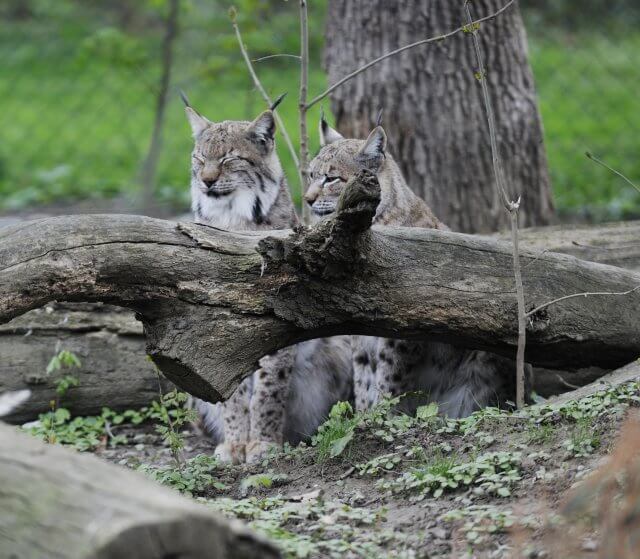7 Amazing Adaptations that Make Bobcats Formidable Predators
Unleashing the Power: Bobcats Formidable Predators of the Wild
Bobcats, scientifically known as Lynx rufus, are fascinating creatures that inhabit various regions of North America. These medium-sized wildcats possess a range of adaptations that make them formidable predators in their ecosystems. From their stealthy hunting techniques to their physical attributes, bobcats have evolved to thrive in diverse environments. In this article, we will explore seven amazing adaptations that contribute to the bobcat’s success as a predator.
1. Camouflage: Blending into the Environment
One of the most remarkable adaptations of bobcats is their ability to blend seamlessly into their surroundings. Their fur coat, which varies in color from grayish-brown to reddish-brown, helps them remain inconspicuous in different habitats. This camouflage allows them to stalk their prey undetected, increasing their chances of a successful hunt. For instance, in forested areas, their coat matches the colors of tree trunks and fallen leaves, providing excellent cover.
2. Sharp Vision: Spotting Prey from Afar
Bobcats Formidable Predators: Bobcats have exceptional eyesight, which aids them in locating prey from a distance. Their eyes are adapted to see clearly during both day and night, making them efficient hunters in various lighting conditions. Their keen vision allows them to spot small rodents, birds, and other prey items, even in low light environments. This adaptation gives them a significant advantage when hunting in dimly lit areas such as dense forests or during twilight hours.
3. Acute Hearing: Detecting Prey’s Movements
Another adaptation that makes bobcats formidable predators is their acute hearing. Their large, tufted ears are not only aesthetically pleasing but also serve a crucial purpose. These ears enable them to detect the slightest sounds made by their prey, such as rustling leaves or scurrying rodents. By relying on their exceptional hearing, bobcats can pinpoint the exact location of their prey, increasing their chances of a successful ambush.
4. Powerful Legs: Swift and Agile Movements
Bobcats possess muscular hind legs that allow them to execute swift and agile movements. Their powerful legs enable them to pounce on their prey with remarkable speed and precision. This adaptation is particularly useful when hunting small mammals or birds that require quick reflexes to capture. With their explosive bursts of speed, bobcats can cover short distances rapidly, surprising their prey and increasing their chances of a successful kill.
5. Retractable Claws: Deadly Weapons
Retractable claws are a defining feature of the bobcat’s anatomy. These sharp, curved claws remain hidden within the paw pads when not in use, preserving their sharpness and preventing them from becoming dull. When hunting, bobcats extend their claws to gain a firm grip on their prey, ensuring a secure hold. These retractable claws also aid in climbing trees, allowing bobcats to pursue prey that seeks refuge in elevated areas.
6. Adaptability: Thriving in Various Habitats
Bobcats Formidable Predators: Bobcats are highly adaptable creatures, capable of thriving in a wide range of habitats. They can be found in diverse environments, including forests, deserts, swamps, and even suburban areas. This adaptability is due to their flexible diet, which includes small mammals, birds, reptiles, and even insects. By being able to adjust their hunting strategies and food sources, bobcats can survive and reproduce in different ecosystems, making them highly successful predators.
7. Solitary Nature: Efficient Hunting
Bobcats are solitary animals, preferring to hunt and live alone. This solitary nature contributes to their efficiency as predators. By hunting alone, bobcats can focus solely on their own needs and avoid competition with other predators. They can also cover a larger territory, increasing their chances of encountering prey. This adaptation allows bobcats to maximize their hunting success and ensure a steady supply of food.
Summary
Bobcats Formidable Predators: Bobcats are remarkable predators with a range of adaptations that make them highly efficient hunters. Their ability to blend into their environment, coupled with their sharp vision and acute hearing, allows them to locate and stalk prey with precision. Their powerful legs and retractable claws enable swift and agile movements, ensuring a successful kill. Additionally, their adaptability and solitary nature contribute to their overall success as predators. Understanding these amazing adaptations helps us appreciate the unique qualities of bobcats and their vital role in maintaining the balance of ecosystems.
Read More About Bobcats From Wikipedia





